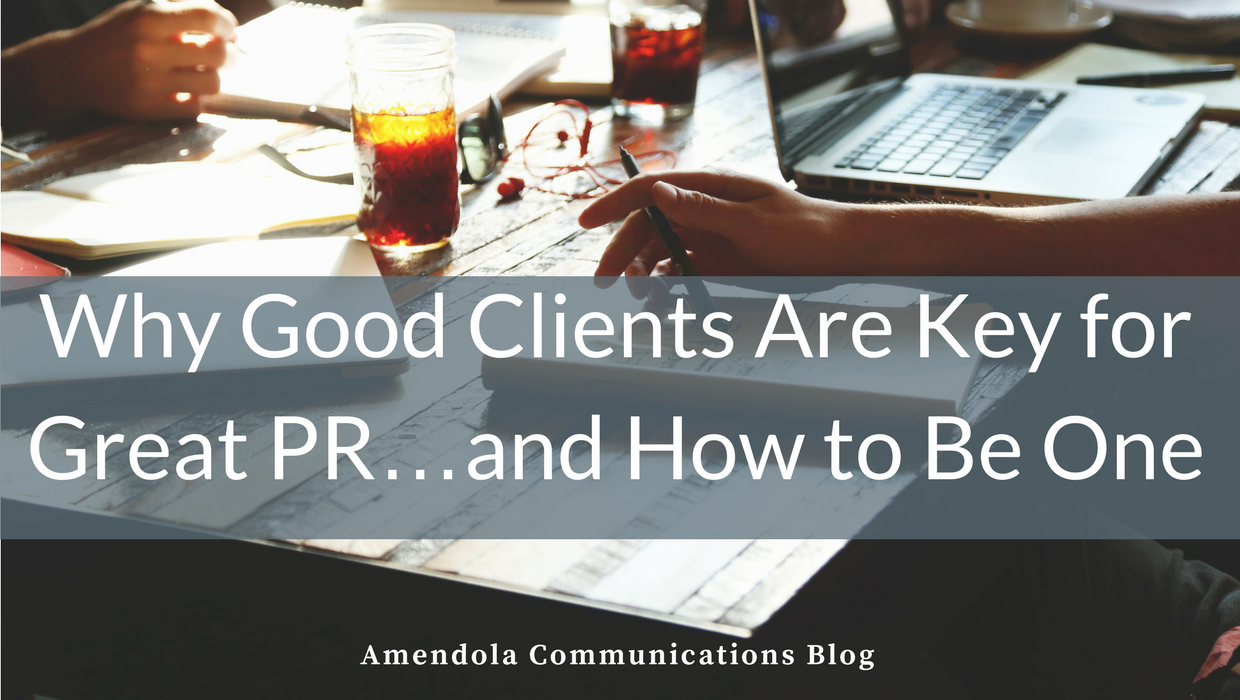Many young organizations seeking to amplify their marketing and communications initiatives look to a public relations agency to help augment existing sales and marketing initiatives. But PR is not a one-size-fits-all discipline and it isn’t limited to media relations, as some still believe. Which means there are all types of ways to become a PR client.
Certainly, media coverage can be powerful, but is your organization built in such a way as to attract the kind of coverage needed to move the business needle? Or are there other facets of PR that you should consider that are more targeted and a better fit for how your business works? Let’s start by taking a look at what your current organizational strengths are.
Media Relations Why and Why Not?
Not all organizations are well-suited or prepared to generate media coverage. Earning coverage is already not an easy task, but can be impossible if your organization doesn’t have some key assets.
Asset #1 A Story
To get coverage in the media, whether it’s a trade publication or The New York Times, you need a story. The growing number of journalists publishing on the internet means there are a lot of places for you to potentially see your story. However, despite enthusiasm and passion within your organization for the projects, products, services and industry trends that you’re involved in, journalists often still don’t see the value to their readers. Some questions to ask yourselves that can help determine if your story is a winner for journalists:
How unique is your business or niche? If you do something that a lot of other companies do, or if you produce a commodity product, it will be more difficult to find a story hook.
Do you have SMEs that possess a truly unique experience and point of view on key trends? Personalities can drive coverage, particularly if you have people that are uniquely qualified to discuss certain topics.
Do you have customers in the healthcare realm this typically means providers that are willing to share experiences and outcomes either (or both) patient health outcomes and financial outcomes?
Asset #2 Data
Building off that last point top tier business journalists are always looking for data. They are a skeptical bunch, and claims of performance are not enough. Validation data represents something that media can sink their teeth into. All the better if you have a third-party such as a healthcare provider or a representative from a respected professional association share their data and perspectives on your story.
With those two key assets in mind, we can look at two very common asks that PR pros get from clients; interviews and content marketing.
Interviews
Every organization would love to have its leaders interviewed. But, despite the number of media publishing online, the amount of top-tier publications with editorial staff dedicated to doing interviews and writing in-depth stories is shrinking. That means that the ones that do interviews can be extremely selective. To stand out, you absolutely must have both of the key assets we’ve discusses a great story , and data to back it up. For B2B organizations, this almost always means linking the reporter up with a customer e.g. a physician, a hospital system executive, etc. that can speak to how a solution helped them solve a problem with data that supports the point.
If your organization has a difficult time coaxing customers to speak out on your behalf, interviews will be harder to come by. But there is another option that might work better.
Content Marketing
Such organizations may have a much more successful program if they lean more heavily into content marketing. By producing your own content and sharing it online, through social media, and through email marketing campaigns, you can control your message and time your stories based on your calendar.
Content is also a good alternative to interviews for these kinds of organizations. If your organization is staffed with a group of subject matter experts, you can often find a home for your story by writing it yourself. Most media are understaffed, yet still hungry for content, so bylined articles by your leaders are a great way to get your message out to targeted audiences.
Finding the right fit
Many, if not all, organizations can benefit from including PR in their marketing mix. It’s important, though, to have a good understanding of how your organization can best utilize PR for maximum success.
Setting out on a program heavily focused on media relations may not be the right fit if your organization doesn’t have unique and compelling data to support its claims of market differentiation. But even without a bench of enthusiastic customer champions ready to help you share your story, you can still find success through other channels, such as content marketing.
